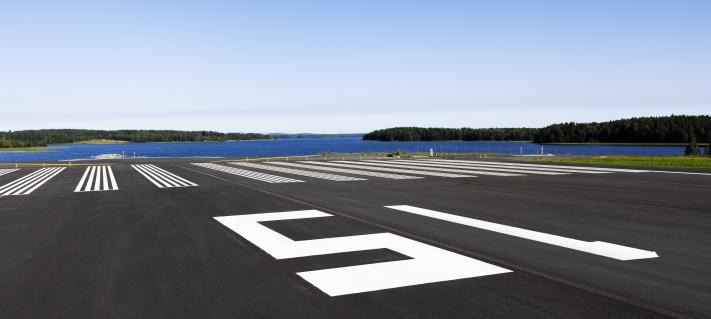Finavia aims for net zero carbon emissions from its operations in the next few years. This means getting airports’ own carbon dioxide emissions as close to zero as possible.
“Our carbon dioxide emissions are mainly caused by lighting, heating and the energy consumption of vehicles,” says Henri Hansson, Finavia’s Senior Vice President responsible for technology, safety, security and the environment.
Approximately one third of these emissions come from vehicles used in airport maintenance. Finavia seeks to achieve zero emissions in maintenance operations by increasing the use of renewable fuels and by continuously improving the efficiency of maintenance.
“We are continuously monitoring the development of fleet technology and looking for opportunities to apply new solutions in an airport environment.”
Using hydrogen can offer great benefits
Finavia is particularly interested in following the development of hydrogen-powered vehicle technology. Hydrogen-powered vehicles do not produce any tailpipe emissions, i.e. exhaust emissions that affect air quality.
“When electricity used in hydrogen production is generated with renewable or otherwise zero-emission energy, it makes phasing out traditional fossil fuels possible.”
In the future, hydrogen can be used especially in energy-intensive large machines that cannot be manufactured as battery-powered machines.
“In our case, the greatest emission reductions can be achieved with the help of hydrogen in snow blowers and sweeper blowers, of which we have more than a hundred in total.”
Even though hydrogen-powered solutions are developing quickly, it is not yet clear when it will be possible to integrate them into airport operations alongside other low-carbon technologies.
“We are likely to operate for a long time using a hybrid model where we have several low-emission technologies in use at the same time: renewable fuel combustion engine technology, small and medium-sized fleet electrification technology and hydrogen-powered solutions for larger machines.”
Autonomy improves the efficiency of maintenance
Finavia’s maintenance is continuously working to be more cost-efficient. Finavia also seeks to reduce emissions from maintenance by making its operations more efficient.
“Very often, cost-efficiency goes hand in hand with emission reductions. When you can get the work done more smoothly, you will not only save money but also protect the environment.”
Efficiency can be increased in the future, especially with autonomous vehicles.
“Autonomy can reduce unnecessary work, such as accidental retreatment of treated areas. It also allows us to plan our work in more detail and frees up staff for other tasks.”
“At the very least, autonomy means that a person is driving all the vehicles, but systems that assist the driver give the driver commands aimed at optimisation. At the most, the machines run completely independently, without any human intervention,” Hansson says.
Autonomous vehicles are currently being tested at a few European airports. Finavia also keeps track of the results of testing at other airports and is involved in development activities.
“There is great potential in autonomous vehicles, but before we start using them, we need to be sure that they are cost-effective and safe. Our weather conditions are challenging, especially in the Nordic countries, so testing the equipment in actual operations is very important.”



